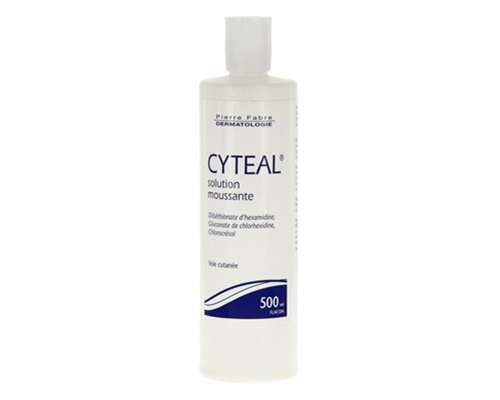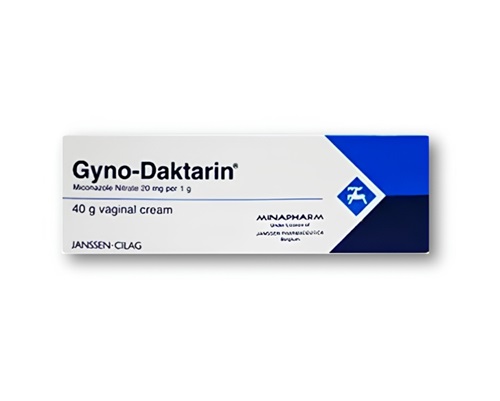Description
Trade name:
Dalacin
Compound:
Each 1 g of cream contains:
Clindamycin phosphate 23.76 mg, which corresponds to the content of clindamycin 20 mg
Excipients: sorbitan monostearate, polysorbate, propylene glycol, stearic acid, cetostearyl alcohol, cetyl palmitate, mineral oil, benzyl alcohol, purified water.
Properties:
Lincosamide antibiotic for local use in gynecology.
Clindamycin phosphate is not active in vitro, but is rapidly hydrolyzed in vivo to form clindamycin, which has antibacterial activity.
Clindamycin, like most protein synthesis inhibitors, is primarily a bacteriostatic agent whose effectiveness is related to the duration of maintaining the concentration of the active substance at a level higher than the MIC of the infecting organism.
Resistance to clindamycin is most often due to modification of ribosome target sites, usually through chemical modification of RNA nucleobases or point mutations of RNA or occasionally protein mutations. In vitro cross-resistance has been demonstrated between lincosamides, macrolides and streptogramins B in some organisms. Cross-resistance exists between clindamycin and lincomycin.
Under in vitro conditions, the following microorganisms causing bacterial vaginosis are sensitive to clindamycin: Gardnerella vaginalis, Haemophilus vaginitis, Corinebacterium vaginitis, Mobiluncus spp., Mycoplasma hominis, Bacteroides spp., Peptostreptococcus spp.
Indications:
Bacterial vaginosis and vulvovaginitis caused by microorganisms sensitive to the drug.
Method of administration and dosage:
1 full applicator (5 g cream, approximately 100 mg clindamycin) is inserted intravaginally, preferably at bedtime for 3 or 7 consecutive days.
Rules for using the drug:
The package with 16.5 g of cream contains 3 plastic applicators, designed for correct insertion of the cream into the vagina.
Remove the cap from the cream tube. Screw the plastic applicator onto the threaded neck of the tube.
Roll the tube from the opposite end and carefully squeeze the cream into the applicator. The applicator is full when its piston reaches the stop.
Unscrew the applicator from the tube and screw on the cap.
Lying on your back, pull your knees toward your chest.
Holding the applicator horizontally, you should carefully insert it into the vagina as deeply as possible without causing discomfort.
Slowly press the plunger until it stops and insert the cream into the vagina.
Carefully remove the applicator from the vagina and discard it.
Contraindications:
History of antibiotic-associated colitis;
age under 18 years (no data on safety or efficacy);
hypersensitivity to clindamycin, lincomycin or any component of the drug.
Use during pregnancy and breastfeeding:
Adequate and controlled studies on the use of the drug in the first trimester of pregnancy have not been conducted, therefore Dalacin vaginal cream can be prescribed to women in the first trimester of pregnancy only for absolute indications, i.e. when the expected benefit of drug therapy for the mother outweighs the potential risk to the fetus.
When using clindamycin intravaginally in the second and third trimesters of pregnancy, there was no increase in the incidence of congenital anomalies of the fetus. Abnormal births occurred in 1.1% of women compared with 0.5% in the placebo group if Dalacin vaginal cream was used in the second trimester for 7 days. Use of the drug in the second and third trimesters of pregnancy is possible if the potential benefit to the mother outweighs the risk to the fetus.
It is unknown whether clindamycin is excreted in human milk after intravaginal administration. Clindamycin has been detected in human milk after oral or parenteral administration, so during lactation the drug should be either discontinued or breastfeeding should be discontinued, taking into account the importance of the drug to the mother.
Precautions:
Before prescribing the drug, the following possible pathogens of vulvovaginitis should be excluded using special laboratory methods: Trichomonas vaginalis, Chlamydia trachomatis, Neisseria gonorrhoeae, Candida albicans and the Herpes simplex virus.
Intravaginal use of clindamycin may result in increased growth of non-susceptible microorganisms, especially yeast-like fungi.
The use of clindamycin (like almost all antibiotics) orally or parenterally is associated with the development of severe diarrhea and, in some cases, pseudomembranous colitis. If severe or prolonged diarrhea develops, the drug should be discontinued and, if necessary, appropriate diagnostic and therapeutic measures should be taken.
The patient should be informed that during therapy with the drug, sexual intercourse should be avoided, as well as the use of other means intended for intravaginal administration (e.g. tampons, douches).
It is not recommended to use Dalacin during menstruation. The start of therapy should be postponed until the end of menstruation.
The drug contains components that can reduce the strength of latex or rubber products (condoms, contraceptive vaginal diaphragms). Therefore, the use of such products during therapy with the drug and for 72 hours after use is not recommended.
Impact on the ability to drive vehicles and operate machinery:
There is no reason to believe that the use of the drug may affect the ability to drive a car and operate machinery.
Side effects:
The safety of clindamycin vaginal cream was assessed in both non-pregnant patients and in patients during the second and third trimesters of pregnancy.
Infectious and parasitic diseases: fungal infections, infections caused by Candida fungi, bacterial infections, skin candidiasis.
From the immune system: hypersensitivity.
From the endocrine system: hyperthyroidism.
From the nervous system: headache, dizziness, dysgeusia.
From the organ of hearing and vestibular apparatus: vertigo.
From the respiratory system: nosebleed.
From the digestive system: abdominal pain, constipation, diarrhea, nausea, vomiting, bloating, flatulence, bad breath, pseudomembranous colitis, gastrointestinal disorders, dyspepsia.
From the skin and subcutaneous tissues: skin itching, rash, urticaria, erythema, maculopapular rash.
From the musculoskeletal system: back pain.
From the urinary system: urinary tract infections, glucosuria, proteinuria, dysuria.
Pregnancy, postpartum and perinatal conditions: pathological childbirth.
From the reproductive system: vulvovaginal candidiasis, vulvovaginitis, vulvovaginal disorders, menstrual irregularities, vulvovaginal pain, metrorrhagia, vaginal discharge, trichomonas vulvovaginitis, vulvovaginal infections, pelvic pain.
Storage method:
The drug should be stored out of reach of children at room temperature. Do not freeze.






